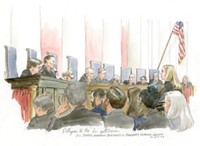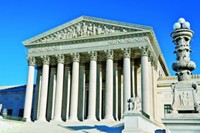Advertisement
Grab your lab coat. Let's get started
Welcome!
Welcome!
Create an account below to get 6 C&EN articles per month, receive newsletters and more - all free.
It seems this is your first time logging in online. Please enter the following information to continue.
As an ACS member you automatically get access to this site. All we need is few more details to create your reading experience.
Not you? Sign in with a different account.
Not you? Sign in with a different account.
ERROR 1
ERROR 1
ERROR 2
ERROR 2
ERROR 2
ERROR 2
ERROR 2
Password and Confirm password must match.
If you have an ACS member number, please enter it here so we can link this account to your membership. (optional)
ERROR 2
ACS values your privacy. By submitting your information, you are gaining access to C&EN and subscribing to our weekly newsletter. We use the information you provide to make your reading experience better, and we will never sell your data to third party members.
Policy
High Court Rules On Patent Case
Innovation: Justices reject a rigid test for evaluating patentability of method claims
by Glenn Hess
July 5, 2010
| A version of this story appeared in
Volume 88, Issue 27

The biotechnology industry is breathing easier now that the Supreme Court has refused to sharply limit the types of inventions that are eligible for patent protection in the U.S.
In deciding the closely watched Bilski v. Kappos case, the justices last week unanimously upheld a lower court’s October 2008 ruling denying two inventors a patent for a method of hedging weather-related risks when buying and selling fuel. The Patent & Trademark Office originally rejected Bernard L. Bilski and Rand A. Warsaw’s application on the grounds that their invention was too abstract and merely solved a mathematical problem.
The high court, however, found that the U.S. Court of Appeals for the Federal Circuit erred in relying on a rigid test to determine what methods of doing business can be patented. To receive a patent, a process must be tied to a particular machine or must transform an object into something else, the appeals court said.
Biotech firms urged the Supreme Court to reject the “machine or transformation” test as the exclusive means for determining patent eligibility. They feared that methods of treatment and diagnosis and other kinds of method claims would no longer be patentable.
“Medical diagnostics companies will breathe a tremendous sigh of relief from this decision,” says Steven J. Henry, an attorney at the law firm Wolf Greenfield in Boston. “All sorts of diagnostics and analytics claims would fail the machine-or-transformation test.”
The Supreme Court was “clearly conscious of the potential negative and unforeseeable consequences of a broad and sweeping decision,” adds James C. Greenwood, president of the Biotechnology Industry Organization, a trade association.
“This ruling specifically states that the machine-or-transformation test is not the sole test for patent eligibility and recognizes that the lower court’s ruling could have created uncertainty in fields such as advanced diagnostic medicine techniques,” Greenwood remarks.
Writing for the Supreme Court, Justice Anthony Kennedy said the federal circuit’s restrictive standard may have been sufficient for determining patent eligibility in the past but is not necessarily appropriate for emerging technologies in “the Information Age.”




Join the conversation
Contact the reporter
Submit a Letter to the Editor for publication
Engage with us on Twitter